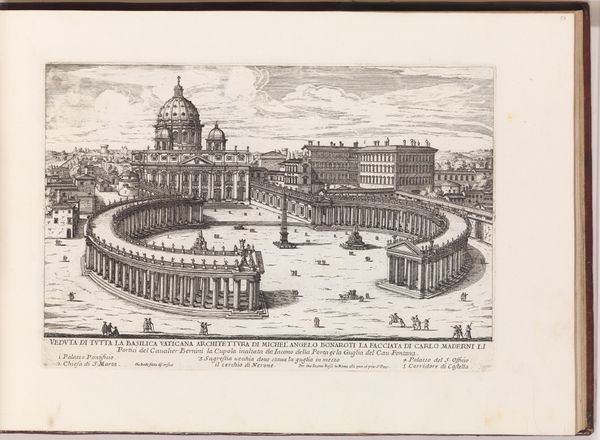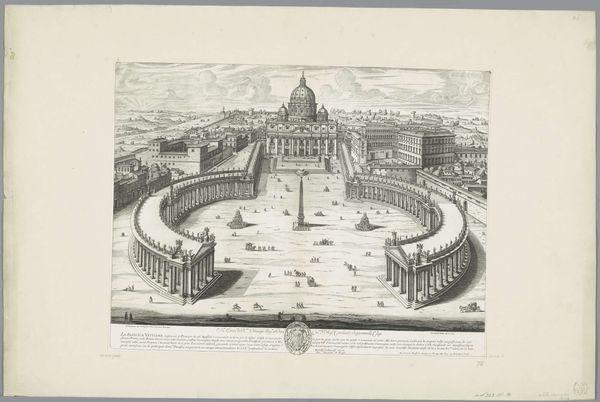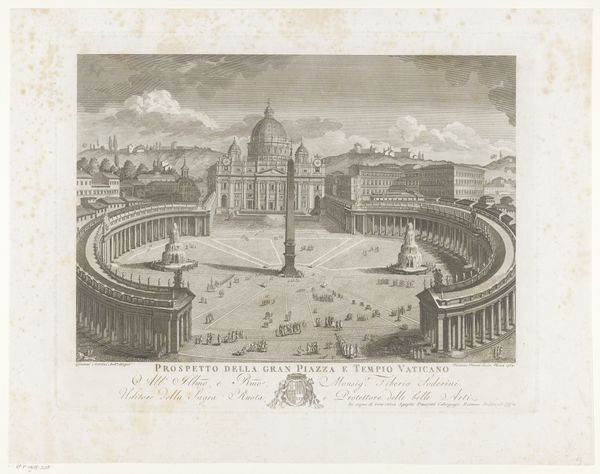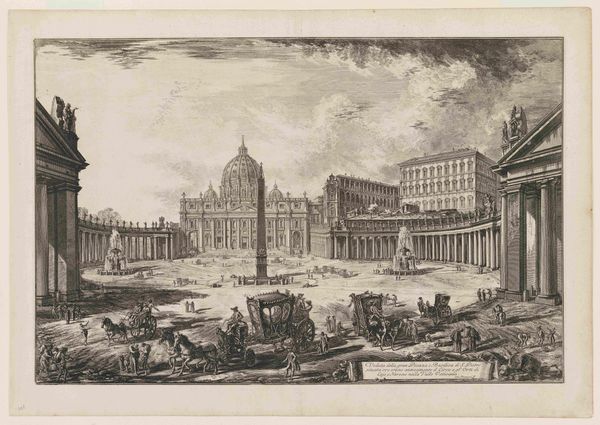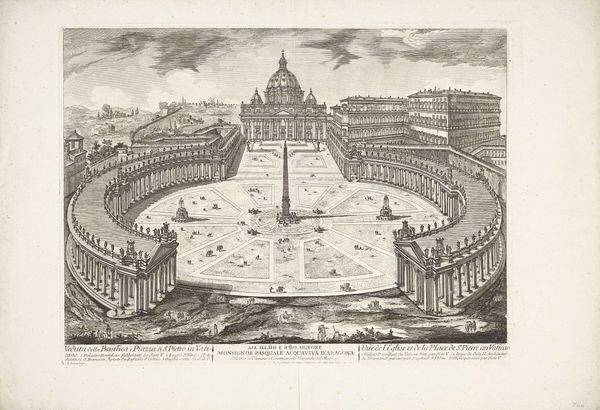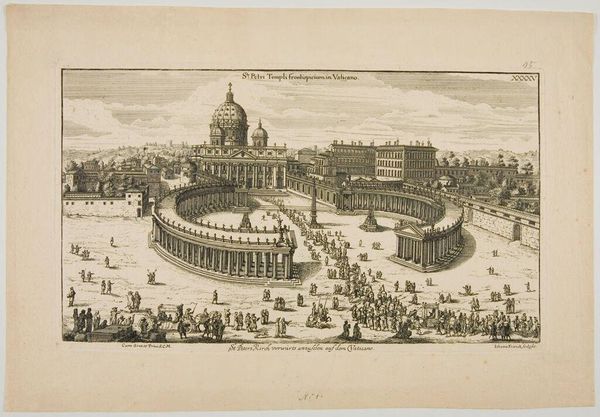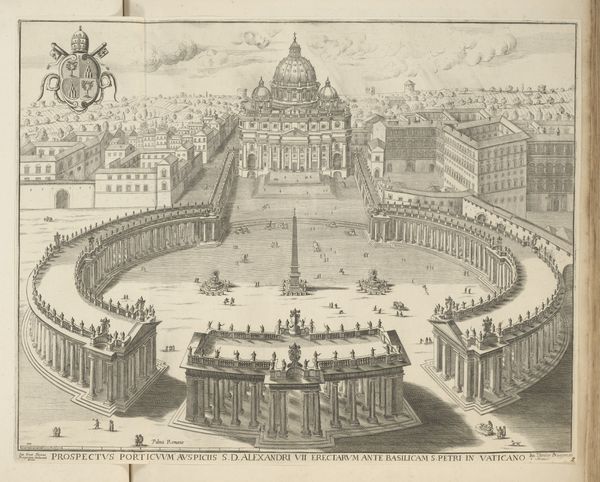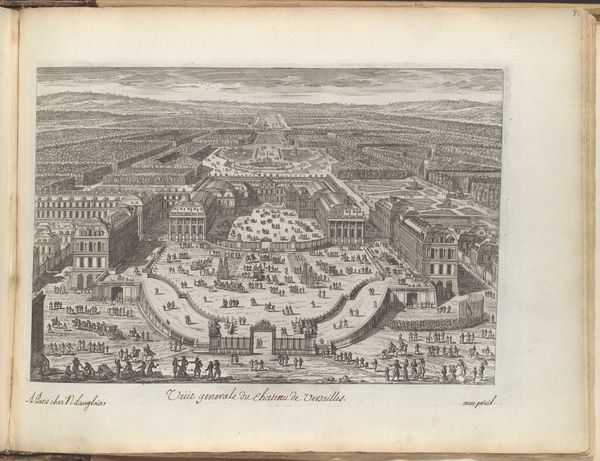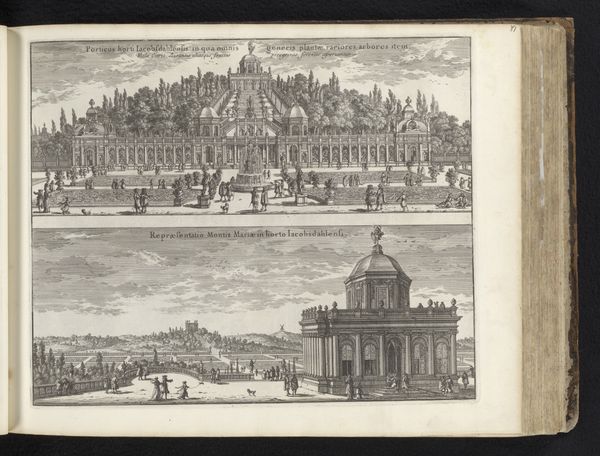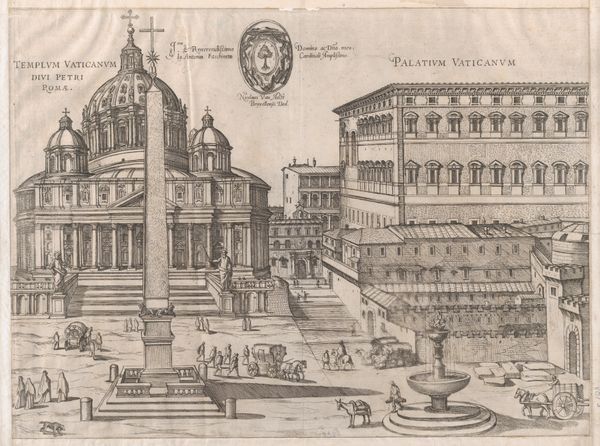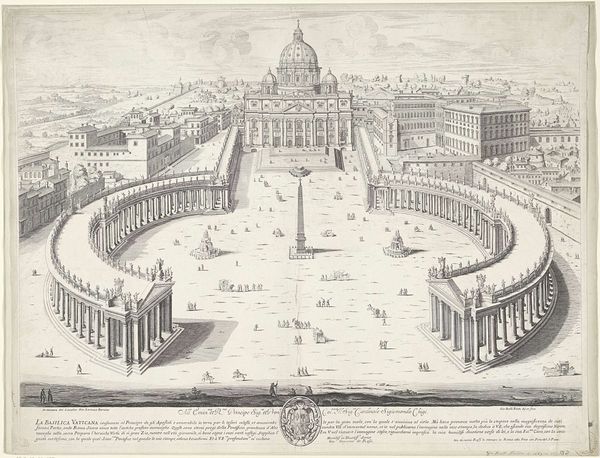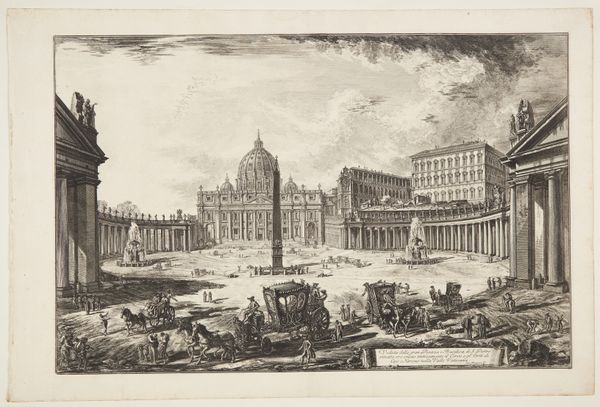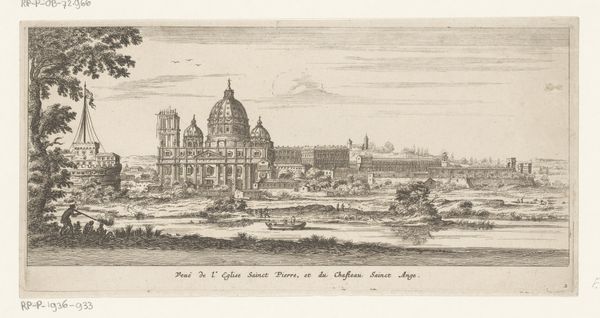
Piazza e Portici della Basilica Vaticana from: Il Nuovo Teatro delle Fabbriche, et Edificii, in Prospettiva di Rome Moderna (...) 1665 - 1669
0:00
0:00
drawing, print, etching, engraving, architecture
#
pen and ink
#
drawing
#
ink drawing
#
baroque
# print
#
pen sketch
#
etching
#
old engraving style
#
pen work
#
cityscape
#
italian-renaissance
#
engraving
#
architecture
Dimensions: Plate: 7 3/16 x 11 3/8 in. (18.2 x 28.9 cm) Sheet: 10 11/16 x 15 7/16 in. (27.2 x 39.2 cm)
Copyright: Public Domain
Editor: This print, “Piazza e Portici della Basilica Vaticana” by Giovanni Battista Falda, was made sometime between 1665 and 1669. It’s a detailed cityscape, created with etching and engraving, that shows St. Peter’s Square. I find the level of detail fascinating, especially considering the limitations of printmaking at the time. How do you interpret this depiction of the Vatican in its historical context? Curator: It's crucial to see this image within the context of Papal Rome, a city actively constructing its image of power and authority after the tumultuous years of the Reformation. These prints weren't just neutral depictions; they were carefully orchestrated visual propaganda. Consider how the expansive piazza, dwarfing the figures within, communicates the Church’s dominance. What message do you think the artist intended to convey about the Catholic Church’s influence? Editor: I guess it's showing how powerful and grand the church is. It almost feels like the people are secondary to the architecture, like they are meant to be overwhelmed. Curator: Precisely. This image also highlights the significant role art and architecture played in reinforcing the Vatican’s cultural and political standing. Notice the almost clinical precision in the architectural rendering. This wasn't just about aesthetics, but about projecting an image of stability and permanence. Consider the investment of time, money, and manpower reflected in this image. How does it compare to other representations of Rome at the time? Editor: Other prints I’ve seen don’t have this sense of…purpose, maybe? They seem more documentary, while this one is making a statement. It’s not just showing the square; it's selling an idea. Curator: Exactly! It’s a curated perspective designed to instill awe and reverence. Understanding these political and social factors deepens our understanding of the print as a historical document, as much as a work of art. Editor: That really changes how I see this piece. I’ll never look at historical cityscapes the same way again.
Comments
No comments
Be the first to comment and join the conversation on the ultimate creative platform.
